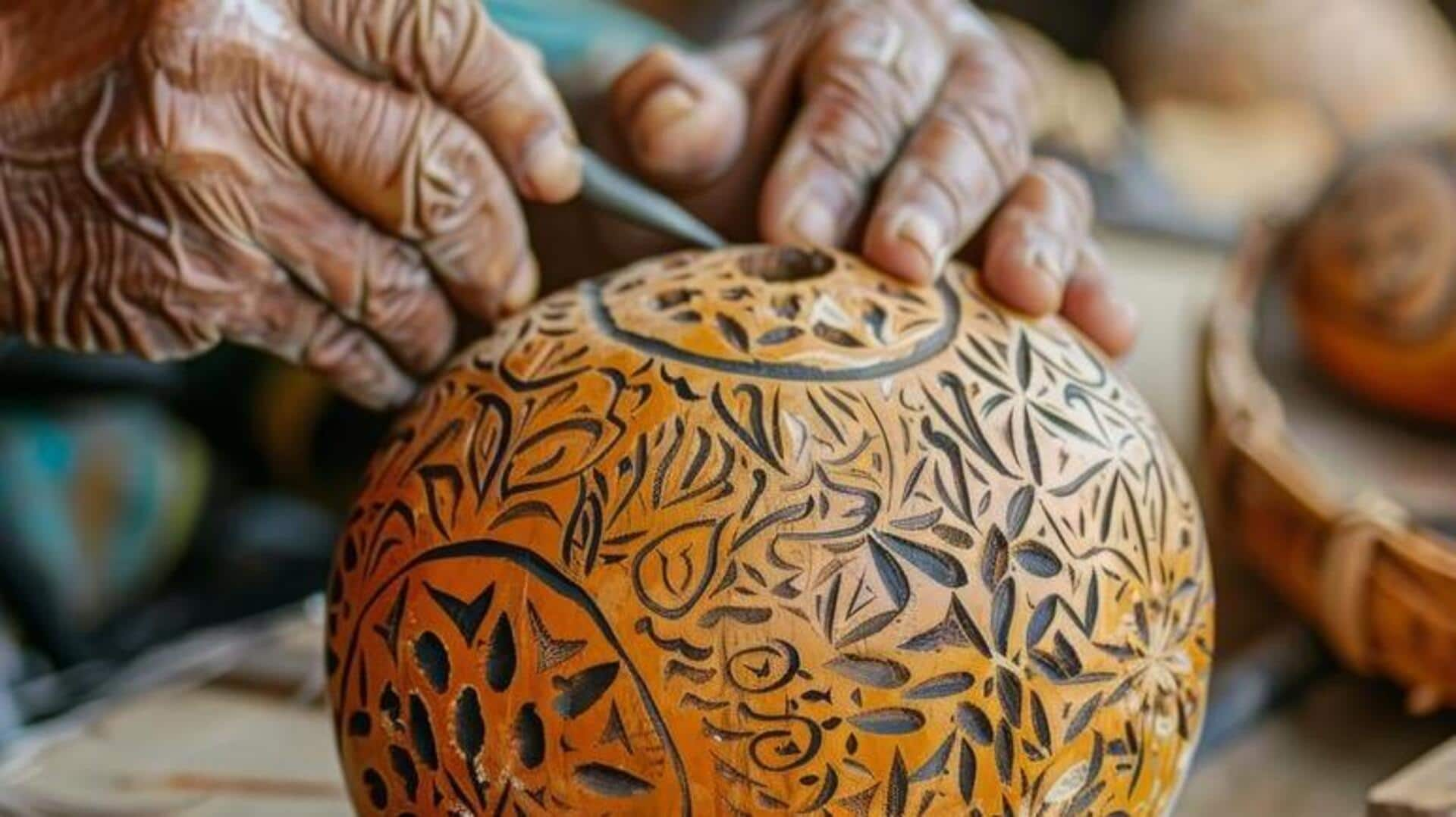
The lustrous art of African gourd carving
What's the story
Gourd carving in Africa is more than just a craft—it's a tradition that transforms ordinary gourds into extraordinary works of art. Rooted in African culture, it goes beyond the decorative, with carved gourds serving as functional household items and even ceremonial symbols. This art form showcases the incredible talent and creativity of African artisans. Through carving, painting, and decorating, they bring each gourd to life, making every piece unique.
History
Historical significance and cultural impact
Gourd carving is a centuries-old African tradition, with roots in ancient civilizations. Practical: Early carvings served utilitarian purposes, used as water and grain containers or even musical instruments. Cultural: Over time, they've become powerful cultural icons within African societies, symbolizing status, beauty, and tradition. Artistic: Unique styles and techniques developed regionally, reflecting local beliefs and customs.
Craftsmanship
Techniques and tools used in gourd carving
Gourd carving is a multi-step process that includes choosing, cleaning, drying, designing, carving, decorating, and finishing. Craftsmen use knives, chisels, and sandpaper to create intricate designs on gourds. Some artists enhance their work with color or detailed designs through painting or pyrography (burning). This art form requires patience and a steady hand, but the result is a beautiful, long-lasting piece of art.
Modernity
Contemporary uses of carved gourds
Traditional uses of carved gourd continue to thrive in African communities, but contemporary artists are pushing boundaries by incorporating them into modern life. They create home decor items (lamps, wall hangings), fashion accessories (jewelry) and even utilitarian objects with a modern twist like Bluetooth speakers with carved gourd casing. This blend of traditional artistry with modern functionality highlights the adaptability and continued relevance of the craft.
Preservation
Preserving the tradition through workshops and exhibitions
To keep the tradition alive, communities hold workshops where young people can learn the art of gourd carving. These classes are hands-on, so kids don't just hear about their culture—they get to experience it. Exhibits allow artists to display their work to the world, bringing in collectors and fans. This way, the ancient craft continues to thrive in the modern world.